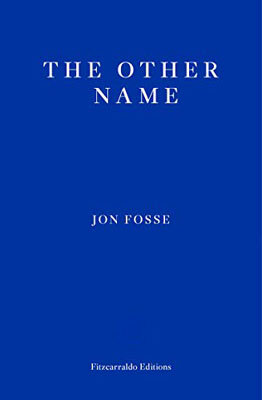A clichéd complaint about modern art is that it’s something a child could do – as if little or no thought has gone into the process behind it. In a way, “The Other Name” might serve as an extended riposte to this dismissive attitude as it details in 351 densely-packed pages an artist agonizing over two intersecting lines he’s painted on a canvass. Of course, it’s about much more than that but this is the primary dilemma at the centre of this deeply introspective novel. Asle is an artist living a sparse monastic existence in a small Norwegian village and his only real social contact is with a neighbour that clears the snow from his driveway. But he also occasionally encounters a doppelganger, an alcoholic artist also named Asle who lives some distance away and who he finds near death passed out in a snow drift. As Asle travels to assist his precarious double he moves in and out of memories and fantasies in a way which fascinatingly traverses the usual boundaries of time and space. The result is a moving and complex meditation on the meaning of art, faith and relationships.
It’s interesting how Asle’s thoughts frequently twist around themselves, repeat or meander in a way which can feel initially frustrating, but all of a sudden they take on a meaning which is profound and revelatory. For instance, a long strange scene where Asle observes two young people frolicking outside results in the statement “We’re making each other like children again” and helped me consider how deep intimacy between adults can inspire a kind of reversion to infancy in our behaviour and manner. It’s a poignant insight into the vulnerability and innocence adults still carry inside them and which is little shown in ordinary life but might be revealed to a significant other. However, the act of watching this couple also takes on strange and sinister undertones as it becomes an act of voyeurism whereby the pair alternately become Asle and his deceased wife or Asle with Asle himself. It’s as if he frequently wanders into shifting new landscapes which blend intense memory with fantasy.
It’s not only Asle who exists in a strange sort of duality, but a woman he meets and who takes charge of his double’s dog also takes on multiple identities. Her name might be Guro or Silje or Silja, but no matter how many times she introduces herself or refers to their previous intimacy Asle is consistency mystified by her. This might be another form of casual misogyny which is also made in that earlier scene when the pair he observes engage in hurried intercourse: “she liked it, even when she was saying she didn’t like it she was actually liking it, she says and he says yes well that’s how it often is”. This attitude is alarming but I’m guessing Asle’s obliviousness to the thoughts and feelings of women is part of his macho disregard for the reality of women and preferred reverence for the idea of them (as in the form of his late wife.)
The doppelganger acts as a distressed acquaintance who Asle strives to save, but he’s also a way of enacting an intense conversation with oneself. In some ways the narrator is an idealized self: faithful, sober, intensely dedicated to his art and lives a simple thrifty lifestyle. Yet he’s also emotionally repressed and actively blocks any thought or mention of his deceased wife. Whereas his double is reckless, unproductive and wants nothing more than to drink. Thus he represents an entirely different way of dealing with insurmountable emotion. While it appears nothing much occurs over the course of the novel Asle gradually works backward to a stage where these dualities can achieve some form of cohesion. There’s an extended sequence where he imaginatively journeys with his sister into places their mother forbid and the novel ends with a shocking and significantly traumatic memory. I’m still really uncertain how I feel about the final few pages. I can’t decide if it’s a crass way of explaining Asle’s psychological complexity or if it adds an interesting way of viewing everything that proceeded it.
Nevertheless, I enjoyed the thoughtful space this story patiently opens up over the course of the novel. It’s a book that you definitely need to be in the mood for, but I found it very relaxing to read and I especially appreciate the way it considers the creative process. Asle occasionally refers to a hidden light that can be seen in successful artwork and to realize this vision in a painting “it’s not the painter who sees, it’s something else seeing through the painter, and it’s like this something is trapped in the picture and speaks silently from it, and it might be one single brushstroke that makes the picture able to speak like that, and it’s impossible to understand”. Fosse’s reverence for the deep engagement and compelling mystery of art whether it’s in paintings or literature is poignantly portrayed in this soulful and searching story.









